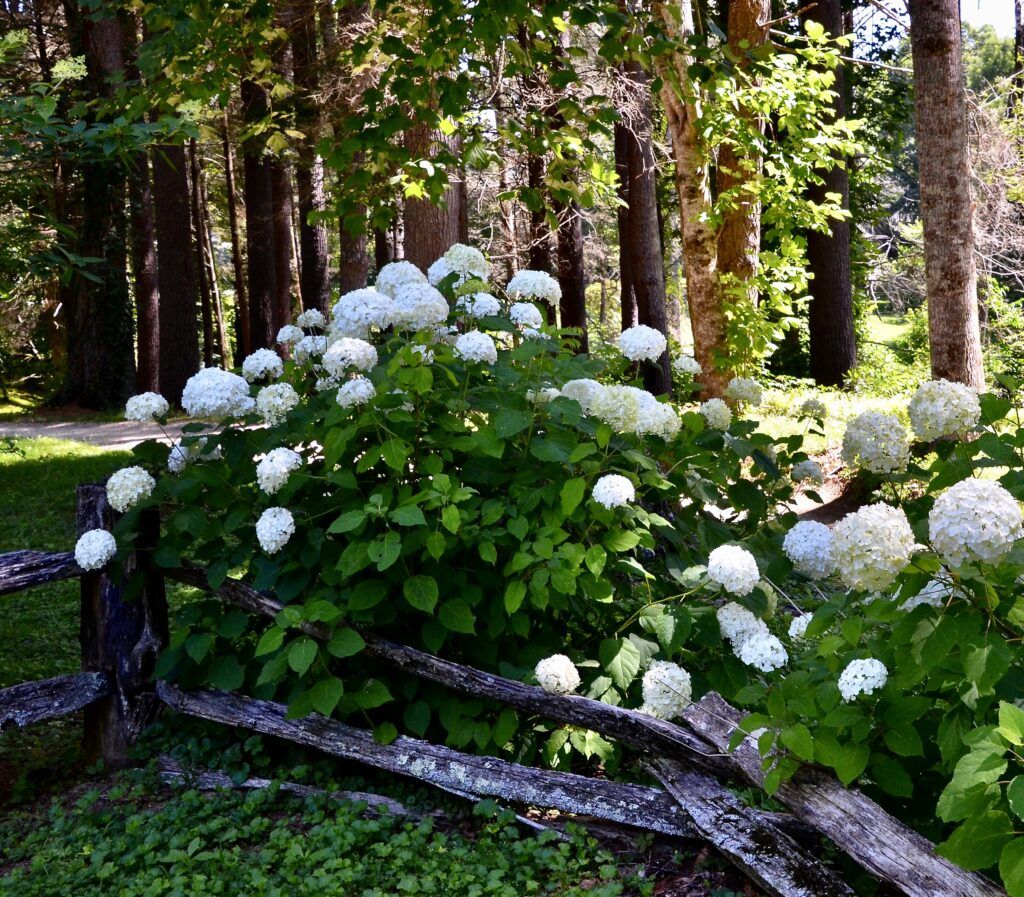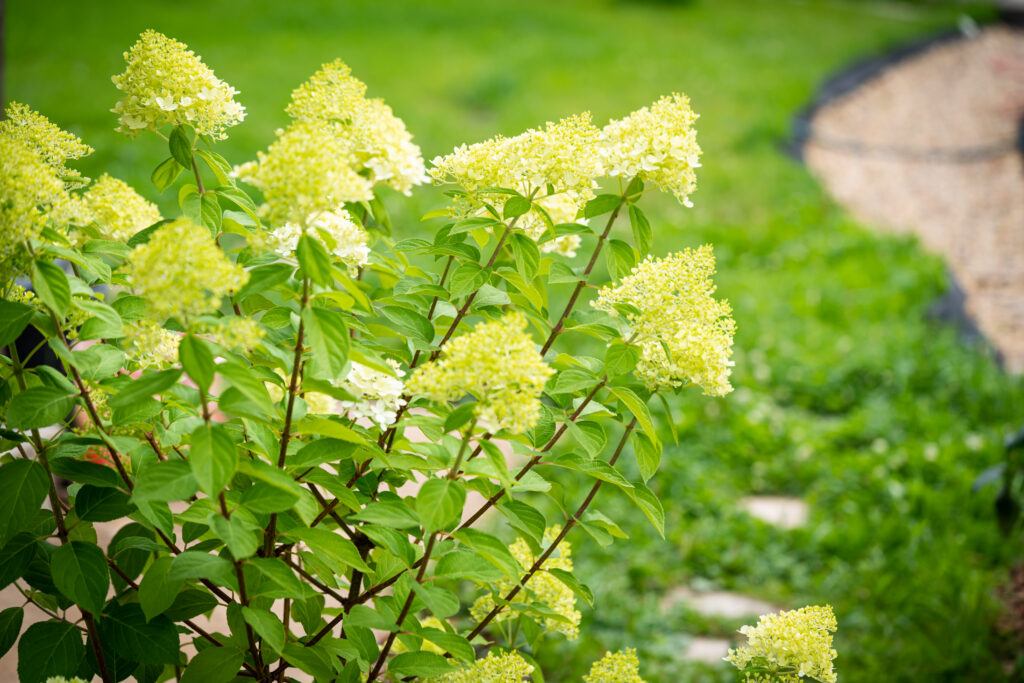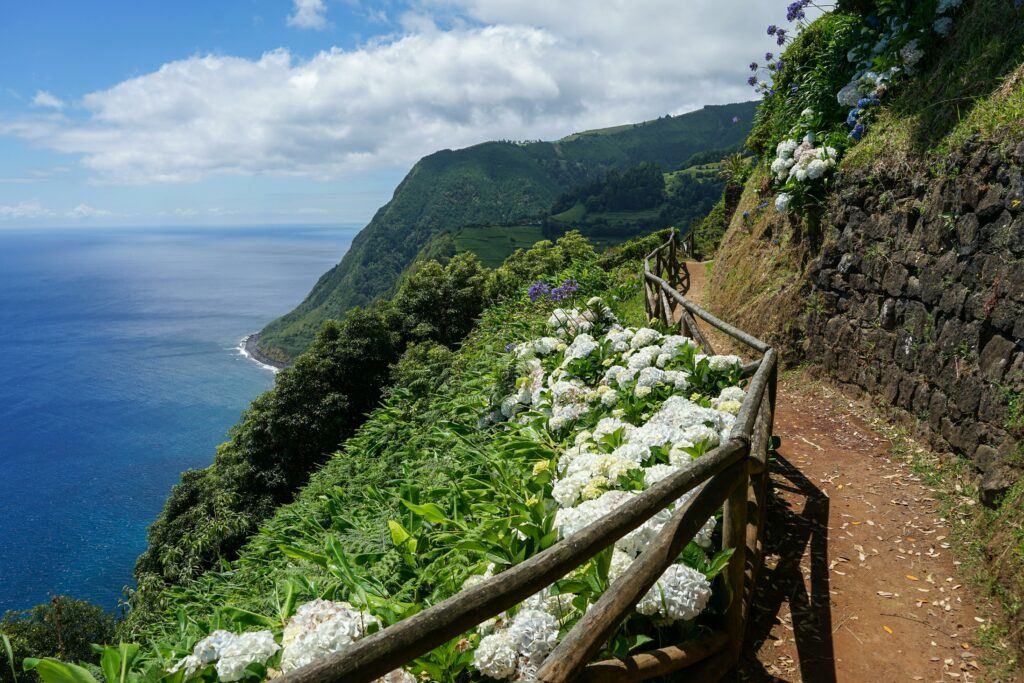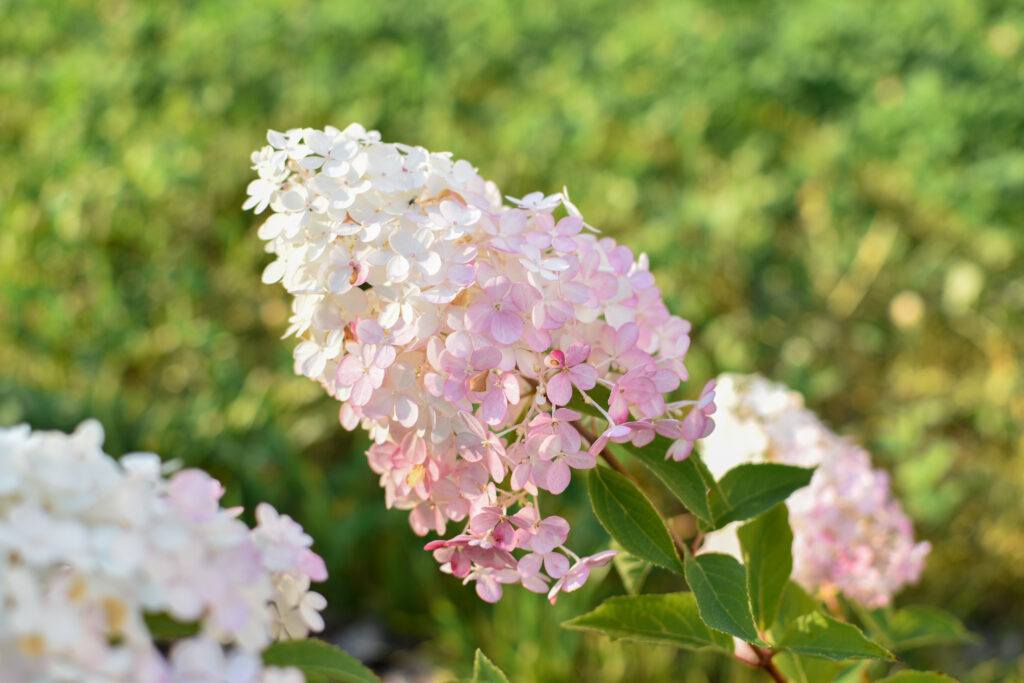
If you’re looking for a flowering shrub that’s hardy, eye-catching, and versatile, few choices can match the Limelight Hydrangea. Beloved for its lime-green blossoms that mature to soft pinks and burgundies, the Limelight Hydrangea is as resilient as it is beautiful—one of many plants that thrive in shade gardens. Whether you’re a seasoned gardener, or a backyard enthusiast, understanding how to grow and maintain Limelight Hydrangea can help you get the most out of this garden gem.
Let’s dive into the complete growing guide and explore how to plant, prune, and problem-solve your way to hydrangea success.
Growing Guide
The Limelight Hydrangea is a deciduous shrub known for its large, conical flower clusters that bloom a light green in mid to late summer and fade into soft pinks and burgundy color into the fall. It’s ideal for foundation plantings, hedges, or as a stand-alone specimen shrub.
Here are the essentials for growing Limelight Hydrangea:
- Botanical name: Hydrangea paniculata ‘Limelight’
- Hardiness zones: USDA Zones 3–9
- Mature size: 6–8 feet tall and wide (dwarf varieties like ‘Little Lime’ are 3–5 feet)
- Bloom time: Mid-summer through fall
- Flower color: Lime green aging to cream, pink, and burgundy
- Type: Panicle hydrangea.
Because it blooms on new wood, it is less prone to late frost damage, making it one of the more reliable blooming hydrangeas in cooler regions.

Light Needs – Sun or Shade
Limelight Hydrangea thrives in full sun to partial shade, but the best flowering typically occurs in full sun. While it performs beautifully in dappled light, it also belongs among other sun‑loving favorites in our guide to plants for full‑sun gardens. In warmer climates, some afternoon shade is beneficial to prevent heat stress and leaf scorch.
Ideal light exposure:
- Northern zones: Full sun (6+ hours) is preferred
- Southern zones: Morning sun and afternoon shade
Too much shade may result in fewer blooms and leggy growth.
Do You Cut Back Limelight Hydrangea?
Yes, pruning Limelight Hydrangea is both necessary and beneficial. Since it flowers on new wood, pruning in late winter to early spring encourages more vigorous growth and better blooms.
How to prune:
- Wait until the shrub is fully dormant—late February to early March is ideal in most regions.
- Cut back last year’s growth by about one-third to one-half.
- Remove weak, crossing, or damaged stems entirely.
This rejuvenation approach will keep the plant compact, structured, and full of flower-producing stems.
How Do You Keep Your Limelight Blooming?
- Full sun: As mentioned, sunlight is key to abundant flowering.
- Annual pruning: Encourages healthy, flower-bearing wood.
- Fertilize smartly: Use a balanced, slow-release fertilizer in early spring. Avoid high-nitrogen fertilizers—they promote leafy growth over blooms.
- Consistent moisture: Hydrangeas like moist (but not soggy) soil. A mulch layer helps retain soil moisture during hot months.
- Deadheading (optional): Removing faded blooms can improve appearance, though it doesn’t directly affect next season’s flowering.
Bonus tip: Avoid overwatering or under-watering—both can stress the plant and limit bloom potential.

Planting Location
Choose a spot that offers:
- Well-drained soil: Limelight Hydrangeas are adaptable but prefer loamy, slightly acidic to neutral soil (pH 6.0–7.0).
- Space to grow: Provide 6–8 feet of spacing between mature plants unless planting as a dense hedge.
- Shelter from strong wind: Their large flower heads can be top-heavy when in full bloom.
Avoid low-lying areas that collect water—root rot is one of the few common issues for this otherwise resilient plant.
Planting Time
The best time to plant Limelight Hydrangea is during spring or early fall.
- Spring planting gives the shrub time to establish roots before the heat of summer.
- Fall planting works well if you allow at least 6–8 weeks before the first hard frost.
Steps to plant:
- Dig a hole twice as wide and just as deep as the root ball.
- Backfill with native soil mixed with compost.
- Water thoroughly after planting and apply mulch around the base.
- Keep soil consistently moist (not soggy) during the first season.
Growth Time and Maturity
Limelight Hydrangea is a moderately fast grower, typically adding 1–2 feet of height per year under ideal conditions.
- You can expect significant size and blooming by the second or third growing season.
- With proper pruning and care, they’ll reach mature size (6–8 feet) in about 4–5 years.
Their upright growth habit and dense foliage make them a striking addition to landscapes even before they reach full maturity.

Common Plant Problems
While generally low-maintenance, Limelight Hydrangeas can encounter a few issues:
- Leaf scorch
- Cause: Too much sun in hot climates or insufficient water
- Fix: Provide afternoon shade and keep soil evenly moist
- Powdery mildew
- Cause: High humidity and poor air circulation
- Fix: Space plants appropriately, prune for airflow, use fungicides if needed
- Aphids and spider mites
- Cause: Dry conditions or overcrowding
- Fix: Spray with insecticidal soap or a strong jet of water; increase humidity
- Root rot
- Cause: Poor drainage and overwatering
- Fix: Amend soil for better drainage; allow topsoil to dry between waterings
- Failure to bloom
- Cause: Excess nitrogen, heavy shade, or improper pruning
- Fix: Adjust fertilizer, provide more sunlight, prune in late winter—not fall
Compared to other hydrangea types, Hydrangea paniculata varieties are far more forgiving.
Final Thoughts
The Limelight Hydrangea is a nearly foolproof flowering shrub that offers structure, drama, and long-lasting blooms to any garden. With its changing color palette and ability to thrive in various climates, it’s no wonder this cultivar has become a favorite among gardeners and landscapers alike.
By understanding its needs—especially in terms of sun exposure, pruning, and moisture—you can enjoy spectacular blooms from midsummer through fall. It’s a great choice whether planted in beds or containers, using our container gardening techniques, it thrives beautifully in varied settings.

Limelight hydrangeas are such a stunning addition to any garden, especially with their changing hues through the seasons. I’ve been thinking about planting a few, but I’m wondering, how well do they handle partial shade compared to full sun? Also, are there specific companion plants you recommend that enhance their visual impact or support soil health? I’d love to hear your thoughts on creating a balanced landscape design around them.
Hi, Slavisa and thank you for your comments. I’m glad you are also interested in one of my favorite plants! As far as companion plants and landscape design, if you plant 3-5 plants in a curved row about 5-6 feet apart, you can use evergreens on the side or behind them. You can then plant perennials like Russian sage or salvia to fill out the bed to make a striking contrast of structure and color.
Kathryn, your article on Limelight Hydrangeas is both informative and engaging. Your detailed guidance on planting, pruning, and maintaining these vibrant shrubs offers invaluable insights for gardeners of all levels.
I particularly appreciate your emphasis on the importance of sunlight exposure. Highlighting that full sun promotes the best blooming, especially in cooler zones, while recommending afternoon shade in warmer climates, provides practical advice for diverse gardening environments.
Gila, I’m glad you enjoyed my article; hydrangeas remind me of my childhood, and limelight is one of my favorites. They have such an interesting color transition and form.
Hello Kathryn,
I worked at a couple nursery/landscape companies for a total of 22 years, I was their computer guy. But I learned a lot about trees and shrubs (not so well with perennials). I remember the first hydrangea I saw, it was a Nikko Blue Hydrangea. I really liked the shade of blue it was, very striking. There are a lot of hydrangeas in Central Illinois where I live, they are a favorite of nurserymen and landscapers. The article is really good, very informational as far as the planting, watering and maintenance of the plant. But I have questions.
Please give me some common issues that can affect Limelight Hydrangeas and their solutions. I remember a lot of clients complaining about the color of their hydrangea. If it was a blue hydrangea cultivar and bloomed pink or vice versa it was a problem with the acidity of the soil. Other than that, I don’t recall to many complaints them.
Pruning, it flowers on new wood so how far do you cut the old wood back, that has always been a problem with me?
Thank you,
Mark
Mark, I’m glad you liked the article on limelight hydrangeas. I think it’s interesting that you can change the color of hydrangeas by changing the acidity of the soil. They are blue in acidic soil and pink in alkaline soil.
The best time to prune them is in late winter or early spring before the buds appear. Some of the problems they can be develop are fungal diseases and pests. You can use fungicides to control fungal disease and insecticidal soap if you notice pests. They should be planted in well-draining soil so they don’t develop root rot.
Limelights prefer afternoon shade, with sun in the morning so they don’t wilt. As far as watering, you should let the soil dry out somewhat between watering.